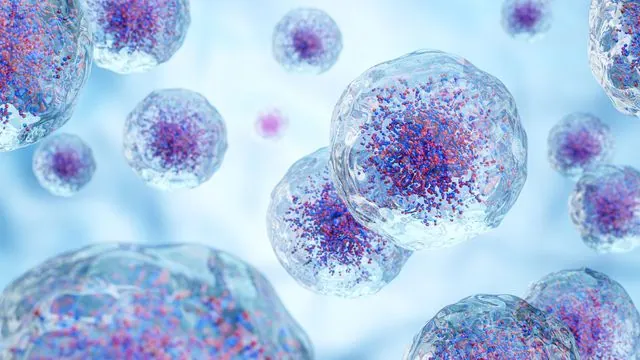
Revolutionary Discovery: How a Protein Sends Signals While 'Straitjacketed'!
2024-09-17
Author: Sarah
Introduction
In a groundbreaking study published in Cell on September 16, scientists have peeled back layers of mystery surrounding TGF-Beta, a crucial signaling protein involved in processes from embryonic development to cancer progression. For years, it was thought that TGF-Beta could only function once it escaped from its confinement—a mechanism likened to a 'straitjacket.' However, researchers at UC San Francisco have revealed that this protein can communicate even while restrained.
Research Findings
Utilizing cutting-edge cryogenic electron microscopy (cryo-EM), a technique that allows for the construction of dynamic three-dimensional models of molecules at atomic resolution, the team discovered that TGF-Beta exhibits surprising flexibility. Despite being tethered to the cell’s surface, the protein manages to extend parts of itself to activate nearby receptors.
Challenging Previous Beliefs
This revelation challenges the long-held belief that TGF-Beta must be released from its latency-associated protein (LAP) to engage in signaling. In fact, prior to this study, it was commonly assumed that without releasing TGF-Beta, vital processes like cellular growth could spiral out of control, leading to conditions like tumors. However, when the team tethered TGF-Beta to LAP in experiments with mice, the mice thrived, showing that TGF-Beta remains functional even when 'captured.'
Expert Insights
Dr. Yifan Cheng, a professor of biochemistry at UCSF, remarks, 'The field has historically focused on stabilizing these kinds of signals to get a high-resolution image but overlooked how their inherent flexibility is central to their function.' This flexibility, he notes, may help explain the workings of other signaling proteins that remain poorly understood.
Implications for Cancer Therapies
The implications of these findings are staggering, particularly for cancer therapies that target TGF-Beta, such as checkpoint inhibitors, which have not been as effective as anticipated. Understanding how TGF-Beta communicates while restrained can open new avenues for enhancing these treatments.
Visualizing TGF-Beta's Movements
The researchers used cryo-EM to visualize TGF-Beta's movements more precisely. Previously, studies based on fixed configurations suggested only two possible states for TGF-Beta—either bound and inert or fully released. However, this work indicates that TGF-Beta operates in a more complex manner, where it can exhibit various motion states while still bound.
Further Investigations
To delve deeper into TGF-Beta’s behavior, the UCSF team stabilized specific parts of LAP and TGF-Beta, then employed cryo-EM to visualize interactions with their receptor. This allowed them to observe how TGF-Beta could extend portions of itself beyond LAP, even if momentarily. The subtle movements captured debunk the idea that signaling is an either/or mechanism, emphasizing a more fluid process.
Transformative Potential
Dr. Stephen Nishimura, also a co-author and UCSF professor, adds, 'Our findings will likely transform how scientists understand cell communication mechanisms.' This new perspective has potential ramifications extending from cancer treatment to cell biology and disease modeling.
Future Directions
The door is now wide open for future discoveries in the realm of molecular communication, encouraging researchers to think differently about how proteins like TGF-Beta operate in their environments. With cryo-EM technology continuing to evolve and bring new insights into cell signaling, who knows what other hidden truths await unraveling in the intricate world of cellular interactions?
Conclusion
Stay tuned for more revelations that could change the landscape of medical treatment as we know it!


 Brasil (PT)
Brasil (PT)
 Canada (EN)
Canada (EN)
 Chile (ES)
Chile (ES)
 Česko (CS)
Česko (CS)
 대한민국 (KO)
대한민국 (KO)
 España (ES)
España (ES)
 France (FR)
France (FR)
 Hong Kong (EN)
Hong Kong (EN)
 Italia (IT)
Italia (IT)
 日本 (JA)
日本 (JA)
 Magyarország (HU)
Magyarország (HU)
 Norge (NO)
Norge (NO)
 Polska (PL)
Polska (PL)
 Schweiz (DE)
Schweiz (DE)
 Singapore (EN)
Singapore (EN)
 Sverige (SV)
Sverige (SV)
 Suomi (FI)
Suomi (FI)
 Türkiye (TR)
Türkiye (TR)
 الإمارات العربية المتحدة (AR)
الإمارات العربية المتحدة (AR)